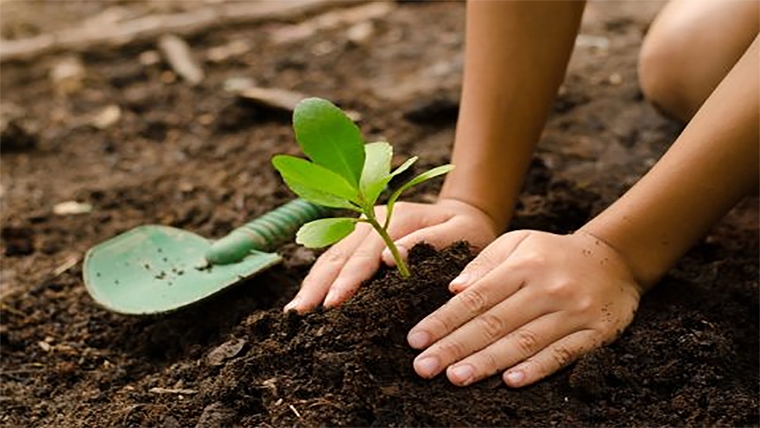
This is Part 2 of How to Teach Your Kids about Money. Part 1 is here. Money is such an important aspect of all of our lives, yet, unfortunately being taught how to manage money not taught in most schools. So, it is up to us, as parents / guardians, to teach our kids about money.
Let’s recap where we left off from Part 1 of this article, from our guest, Will Rainey of Blue Tree Savings.
In Part 1, we encouraged you to get your kids to think of money as ’seeds’.
Kids will straight away know that seeds can be planted and grow into something else. Therefore, when they are given money, they will have to consider whether to give the seeds away (spend) or plant them (save).
The more they can visualise their money, the better chance they have of learning and retaining the message. For my kids, they get to choose where they plant their money. They can plant a combination of:
Flowers, which is saving up for something they want to buy in the future, e.g. a new toy.
Bushes, which is their savings account.
Blue Trees, which is the money we invest for them.
They realise that both their Bushes and Blue Trees produce more seeds over time which leads to more Bushes and Blue Trees growing, i.e. learning that money can grow and make more money.
We show them their forest growing over time as they save some of the money they receive. They love it and ask, “how many Blue Trees do we have now?” Also, my kids don’t like the thought of cutting down trees, so they naturally become protective of this forest they are growing.
Remember, most young adults today don’t have a single Bush or Blue Tree, let alone a forest. This shows the advantage you can be giving your kids.
If you’d like to show your kids their money as Flowers, Bushes and Blue Trees, then here is a tool you can use - Habit Maker, you can find it here.
Pocket money is the most underrated financial education tool there is!
One more point before I set out the three essential money habits you should help your kids form. I strongly recommend that you give your kids some weekly pocket money (if you aren’t already doing so). It doesn’t matter how much you give them, but please make sure it doesn’t impact your financial situation.
The key reason for giving them some pocket money is that it allows them to start making decisions about money. The more decisions they make, the great the opportunity for them to start forming the three money habits below.
The 3 essential money habits you should help your kids form
Now on to the habits which will change your kids’ financial future for the better.
- Get them to save at least 10% of all the money they receive for the long-term
This has a number of benefits. Firstly, it teaches them to think about saving before they start spending. So many people say, ‘I’ll save whatever I don’t spend” and then end up spending it all. This habit will really help them start to build up some savings and then only spending what is left. Note that they only need to save 10%, that’s still 90% left to spend so won’t make a big difference in terms of being able to buy what they want.
Secondly, this habit is about saving for the long-term. This money is to help them see that money can make money. Once they have saved enough, put this money in a savings account, or better still, consider investing this money.
Don’t be put off by the fact that 10% is a small amount. Even if you give them $2 pocket money, get them to save that 20c. It’s the habit we want to develop, besides, it will soon add up!
Imagine if you saved 10% of all the money you ever received since you were a child - I know I wish I had!
- Get them to save up for something they want
Ask your kids to write down what they want to buy but can’t afford now. Then get them to save up for it.
This is very simple but super powerful.
We now live in a world where people want everything instantly. We need to teach our kids to delay their gratification. Those that learn to delay their gratification are much more likely to overspend and go into debt when they are older.
- Get them to look at their money regularly
There is a famous saying, ‘What gets monitored, gets managed’ - this is never truer than when it comes to money!
Get in the habit of showing your kids how much money (or you can change this to Flowers, Bushes and Blue Trees) at least once a month. This will help them understand that money is important. They will also start to see that their money is growing (if they are savings).
It also allows them to ask questions and build a positive relationship with money.
Don’t delay, get your kids forming these habits today!
There you have it. You now have the knowledge and actions you need to make a real positive impact on your kids’ financial future.
Get them understanding that money has different uses and help them form these three essential habits.
For parents who would like to help their kids form these three essential habits, and see their financial forest grow, then please check out the Blue Tree Habit Maker.
*Lynda Moore is a Money Mentalist coach and New Zealand’s only certified New Money Story® mentor. Lynda helps you understand why you do the things you do with your money, when we all know we should spend less than we earn. You can contact her here.
2 Comments
Not arguing with those money habits but for many people a far more powerful change would be to ditch the habit of buying expensive shiny things for reasons of novelty or status. This would also be great news for NZ's trade deficit and for our carbon footprints.
Too many kids see their parents skimping on important stuff like healthy food and heating the house properly, whilst breaking the bank for that new TV, replacing the hatchback with a sexy new ute, etc.
Everyone seems to agree it should be taught, the question is how.
Personal Finance is an incredibly complex subject - far more so than many believe (even on this website) as it encompasses all of life's skills and experiences.

We welcome your comments below. If you are not already registered, please register to comment.
Remember we welcome robust, respectful and insightful debate. We don't welcome abusive or defamatory comments and will de-register those repeatedly making such comments. Our current comment policy is here.